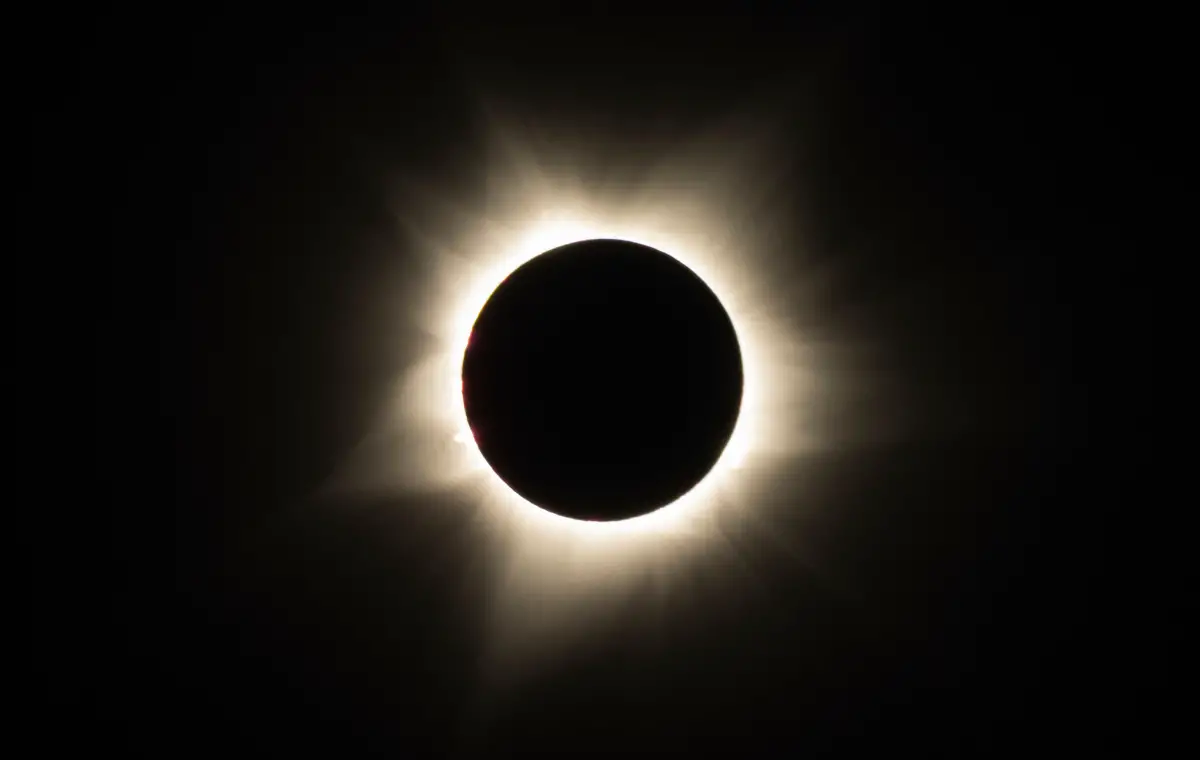Total solar eclipse will happen on 8 April 2024
The total solar eclipse of 2024 will occur on Monday, April 8. It will cross North America, passing through Mexico, the United States and Canada.
The total solar eclipse of 2024 will occur on Monday, April 8. It will cross North America, passing through Mexico, the United States and Canada. The total solar eclipse of 2024 will begin over the South Pacific Ocean and will be first visible over continental North America off the Pacific coast of Mexico at approximately 11:07 a.m. PDT. It will then pass through the United States, starting in Texas and passing through Oklahoma, Arkansas, Missouri, Illinois,
Kentucky, Indiana, Ohio, Pennsylvania, New York, Vermont, New Hampshire and Maine. Small parts of Tennessee and Michigan will also experience a total solar eclipse. In Canada, it will be visible in southern Ontario, Quebec, New Brunswick, Prince Edward Island and Cape Breton, and will exit continental North America over the Atlantic coast of Newfoundland,
Canada at 5:16 p.m. NDT. The duration of totality will last 4 minutes and 27 seconds, almost twice as long as the Great American Eclipse of August 21, 2017. The best places to view the total solar eclipse of 2024 include locations within the path of totality, such as Texas, Oklahoma, Arkansas, Missouri, Illinois, Kentucky, Indiana, Ohio, Pennsylvania, New York, Vermont, New Hampshire, Maine , Southern Ontario, Quebec, New Brunswick, Prince Edward Island and Cape Breton.
Click here to follow whatsApp channel
What is the history of total solar eclipses:
The history of total solar eclipses is rich and spans millennia. Surviving records have shown that the Babylonians and ancient Chinese were able to predict solar eclipses as early as 2500 BC. The first known telescopic observation of a total solar eclipse was made in France in 1706. The first notable total solar eclipse of the century occurred on June 16, 1806, crossing the United States from Arizona to Massachusetts. The next total solar eclipse on the list, July 28, 1851, was significant for two reasons.
It was the first to launch dedicated eclipse missions and the first photograph of the Sun’s corona was taken during this eclipse. Historically eclipses have been seen as omens that bring death and destruction, but in reality, they are harmless and have even contributed to major advances in the history of science, such as Einstein’s theory of relativity. To prove.
Most recent total solar eclipse that occurred:
The most recent total solar eclipse occurred on December 14, 2020. This total solar eclipse was visible in parts of South America, especially Chile and Argentina. The next total solar eclipse will occur on April 8, 2024 and will be visible in North America, especially Mexico, the United States and Canada.
Partial solar eclipse:
A partial solar eclipse occurs when the Moon comes between the Sun and Earth, but the three are not perfectly aligned, causing only part of the Sun to appear covered, giving it a crescent shape. This happens because the Moon, Sun, and Earth do not line up in a perfectly straight line, and the Moon casts only the outer part of its shadow, the penumbra, on Earth. The most recent partial solar eclipse occurred on December 4, 2021. The next partial solar eclipse will occur on April 30, 2022. Partial solar eclipses are relatively common, occurring about two to five times a year
Difference between partial solar eclipse and lunar eclipse:
A partial solar eclipse occurs when the Moon comes between the Sun and Earth, but the three are not perfectly aligned, causing only part of the Sun to appear covered, giving it a crescent shape. This happens because the Moon, Sun, and Earth do not line up in a perfectly straight line, and the Moon casts only the outer part of its shadow, the penumbra, on Earth. On the other hand, a lunar eclipse occurs when the Earth passes between the Sun and the Moon, casting a shadow on the Moon.
A partial lunar eclipse occurs when a portion of the Moon passes through Earth’s shadow, while a total lunar eclipse occurs when the entire Moon passes through Earth’s shadow. Unlike a solar eclipse, a total lunar eclipse lasts for a few hours, with the total duration usually averaging about 30 minutes to over an hour. A solar eclipse can occur only during the new moon, while a lunar eclipse can occur only during the full moon. Solar eclipses are relatively rare events, with total or annular eclipses occurring about two to five times a year, while lunar eclipses occur about once per year at any location on the planet.
